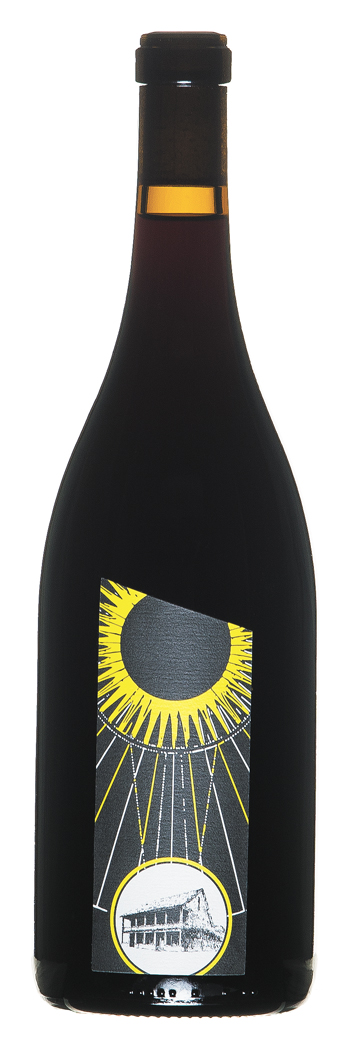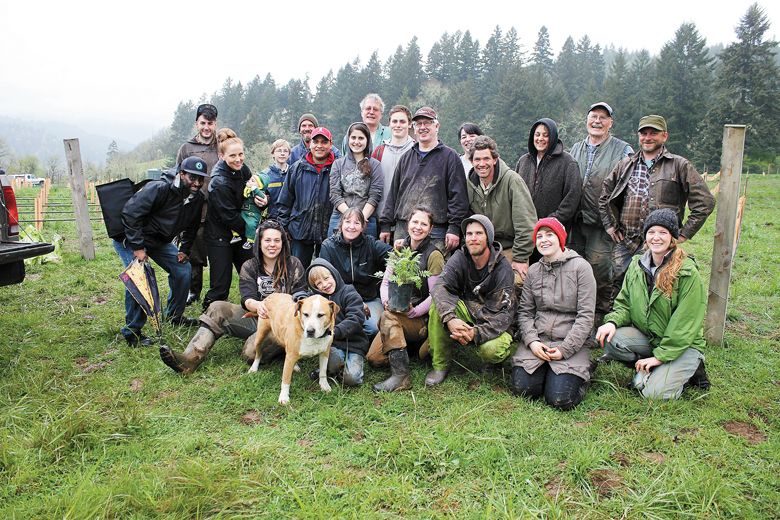The Changeup: Punkish Pinot of Yoncalla
Applegate House Vineyards debuts improbable hit blend
Who in their right mind would blend Albariño with Pinot Noir? The mother of invention didn’t give Jessica Applegate much choice in the matter. The improbable blend turned out to be the most exciting export from Douglas County since Pro Football Hall of Famer Troy Polamalu.
In 2018, Applegate prepared to produce her first Applegate House Vineyards wines. Then she discovered her young Umpqua Valley vineyard yielded enough grapes for just one barrel. Applegate decided to blend the white and red wine grapes. It was a bold move befitting a sixth-generation member of a pioneering family that crossed an ocean and prairie to help settle Oregon.
Applegate’s three-acre vineyard is planted on a southwest-facing slope behind the historic Applegate House. The house has been in the Applegate family since its construction in 1852 by Charles and Melinda Applegate, Jessica’s great-great-great-grandparents.

The vineyard sits at approximately 440 feet above sea level, where distinct maritime-influenced breezes drop evening temperatures. According to Applegate, “The site isn’t as warm as winegrowing areas south of here, and it isn’t as cool as Elkton.”
A mile or two from her vineyard is where Jesse, Charles Applegate’s younger brother, planted a vineyard on Mount Yoncalla in the 1870s.
Jesse Applegate settled in the Umpqua Valley in 1849. By all accounts, the surveyor and rancher became a wealthy man. After a financial setback stripped him of his money and property in the early 1870s, he and his wife, Cynthia, eventually settled into a small log cabin on Mount Yoncalla. Jesse planted a vineyard there to generate income.
A Drain newspaperman reported the vines came from the California nursery of Jesse’s nephew, George W. Applegate, and “other friends.” While the nephew specialized in table grapes, he also grew Zinfandel vines. It is not out of the realm of possibility that Jesse Applegate’s vineyard included Vitis vinifera vines.
Jessica Applegate’s rich family history helped inspire her vineyard plans. “It was a crazy idea. I was in the midst of a divorce and transitioning to being a single mom,” Applegate said. “I love gardening and wanted to be as good a steward of the land as my ancestors were. I thought to myself, ‘What can we plant here?’” Grapes were the obvious answer, and, in 2009, she considered planting vines in the shadows of Jesse’s long-gone vineyard.
After a few years analyzing soil samples, talking with consultants and prepping the site, Applegate assembled friends, family and vineyard manager Nathan Wood’s “vine punks” to plant 2,000 Pinot Noir — Dijon clones 777 and 115 — vines and 1,000 Albariño vines behind Applegate House. Wood’s Elkton Vineyard Management is the first vineyard management company to specialize in viticultural practices in Douglas County.
The “vine punks” reminded Applegate of the Wobblies roaming the Pacific Northwest in the early 1900s to work harvests and stir things up with their radical tinge. “The ‘vine punks’ were self-named and consisted of two mohawks, two dreadlocks, a mullet and a couple of clean cuts to round us out. The crew included locals and people from around the country who got to Elkton by hopping trains,” Applegate explained.
Wood stopped managing Applegate’s vineyard in 2019, but he helped find his replacement, Isabel Newlin, and introduced Applegate to her winemaker, Luke Wylde of Lares Wines and Statera Cellars. Wood will continue to act as a consultant for Applegate House Vineyards.
Applegate House Vineyards 2018 Pinot Noir-Albariño ($40)
Oregon’s most widely planted grape meets the pride of the Iberian Peninsula with 90% Pinot Noir and 10% Albariño. This blend would make any “vine punk” thrash with pride.
Wylde de-stemmed the fruit into a puncheon and returned 15% of the stems by weight. The puncheon’s metal door remained closed as it sat outside, subject to the temperature and mood swings of nature. Once it was dry, the wine was pressed off into a neutral oak barrel where it rested — indoors — for over a year. A total of 20 to 25 parts per million of sulfur was added to the wine.
This wine appears a garnet color of a Che Guevara T-shirt that hasn’t gone through the wash a gazillion times. “Kinda carbonic” aromas of butterscotch and dark strawberries mosh it up with cedar, wet clay and a sweet floral note.
Based on the aromatics, I expected to taste boatloads of fruit and acidity. Instead, I was hit in the mouth with 13.5% ABV’s worth of blackberries, espresso, bittersweet dark chocolate and tannins roughing up the roof my mouth like a Bill Murray noogie.
Drinking this wine was exhilarating. Find some fast.
The Changeup, a monthly column by Michael Alberty, is a baseball pitch designed to disorient and confuse. It’s the perfect representation of the unknown and its mastery over those who think they know what to expect. This column is devoted to those unorthodox Oregon wines you never saw coming.










